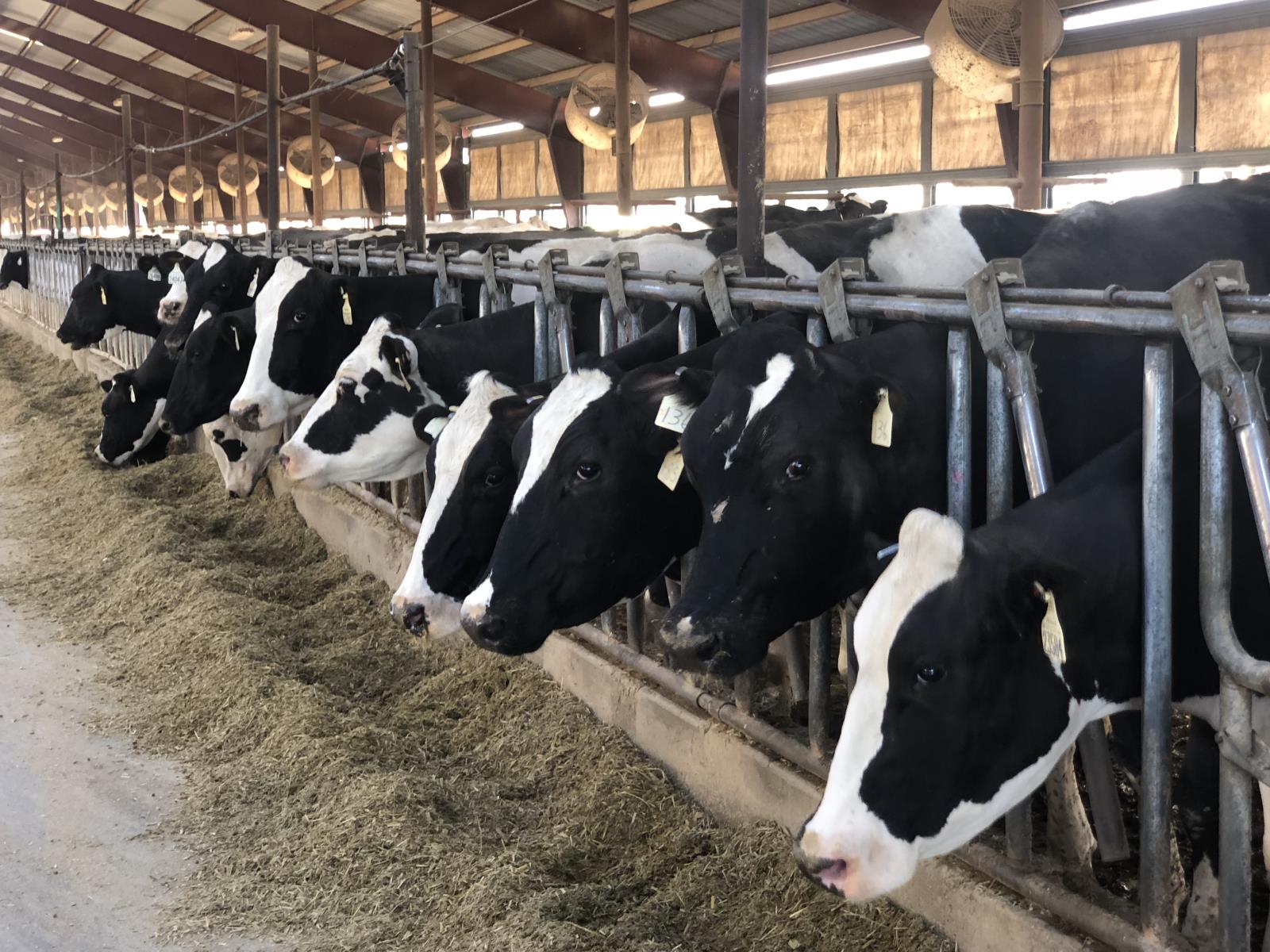Milk supply tight and farm-level prices up, along with costs

By Sean Ellis
Idaho Farm Bureau Federation
POCATELLO – The global milk supply is contracting and, from a price perspective, that bodes well for Idaho’s dairy industry, which has a large impact on the state’s overall economy.
“Global supply is contracting. Just about everywhere, we’re seeing milk supply contracting,” Dustin Winston, a dairy financial analyst based in Idaho, said Dec. 16 during a University of Idaho Ag Outlook Seminar presentation.
“Demand is in fact pretty strong. As supply becomes limited, there (is) a bidding war for … that supply that is out there,” he said.
Winston said milk prices paid to dairy operators will likely continue to be strong through at least June.
But while a tight milk supply means higher farm-level milk prices for Idaho dairies, the cost of production for those operations has also risen substantially over the past year.
That makes it tough for dairies to eke out a profit even with higher milk prices.
Idaho ranks No. 3 in the nation in total milk production and most of Idaho’s milk is used to produce cheese. That milk is known as Class II milk.
Class III milk futures are currently in the $19-20 per hundredweight (cwt) range for all of 2022.
The break-even price for most of Idaho’s dairy operations has been about $16 to $16.50 per cwt for the past several years.
But higher production costs have pushed that break-even level into the $18.50-$19 per cwt range, said Idaho Dairymen’s Association Executive Director Rick Naerebout.
He said the higher cost of feed has been the main factor behind higher production costs for dairy operations, and higher labor costs haven’t helped.
Despite the higher production costs, most Idaho dairies did make a profit during 2021, Naerebout said.
“Prices were above break-even for Idaho dairy operations in 2021 and they are making some money,” he said. “I expect the average Idaho dairy operation will have had a decent year in 2021.”
But, he added, the uncertainty surrounding production costs, the COVID situation, labor availability and other factors have added a tremendous amount of risk to the business and that has resulted in a number of smaller dairies being purchased by larger operations.
“The amount of risk in the business any more makes it tough for those smaller operations to stick around for another year,” Naerebout said.
Dairy is Idaho’s No. 1 agricultural commodity when it comes to total farm cash receipts, which is what the farmer gets directly for their commodity. Idaho dairies bring in about $3 billion per year in farm cash receipts.
When the hay, corn and other crops needed to feed cows is factored in, the dairy industry’s total economic impact on the state is considerable.
According to the U.S. Dairy Export Council, Idaho’s dairy industry has a $9.1 billion economic impact on the state, contributes 5.7 percent to Idaho’s total gross domestic product, and supports more than $400 million in wages.
While global milk supply is expected to continue to contract, production costs are expected to continue to rise.
“The cost of milk production is rising and will likely rise again (in 2022),” Winston said.
Still can't find what you are looking for? Find by topic:
- Achievement Award (YF&R)
- Actions Alerts
- Advocacy
- Ag Ambassadors
- American Farm Bureau
- American Farm Bureau Policy Book
- Archive Photos
- Articles
- Board of Directors
- Calendar - State/District
- Calendar - County
- Capitol Reflections
- Collegiate Chapters
- Committee Application Form
- Commodities
- Convention Annual
- County Presidents & Board Information
- County Resource Page
- Delegate Form
- Discount Programs
- Discussion Meet
- Discussion Meet - High School
- Education Programs
- Events
- Excellence Award (YF&R)
- Expense Voucher
- Flickr
- Gem State Producer
- High School Discussion Meet
- High School Speech Contest
- Hope in Idaho Ag
- House of Delegates Credentials Form
- IFBF Board of Directors
- IFBF Policy Book
- IFBF Staff
- Insurance
- Legislative Action Program
- Legislative Issues
- Library
- MAC Trailer
- Magazines
- Map My Benefits
- Member Benefits
- Member Discount
- Membership Application
- Mental Health Resources
- Mission Statement
- Moving Agriculture to the Classroom
- Newsletter Sign up
- News Releases
- News Room
- Open Range Law
- Podcast
- Policy Book American Farm Bureau
- Policy Book IFBF
- Postcard Order
- Promotion & Education
- Range - Open Range Law
- Quarterly
- Registration for Events
- Scholarship Application
- School Trailer
- Social Media
- Speech Contest
- Staff IFBF
- Ticket Sales Portal
- Videos
- What is IFBF
- Young Farmers & Ranchers Program
- Youtube
